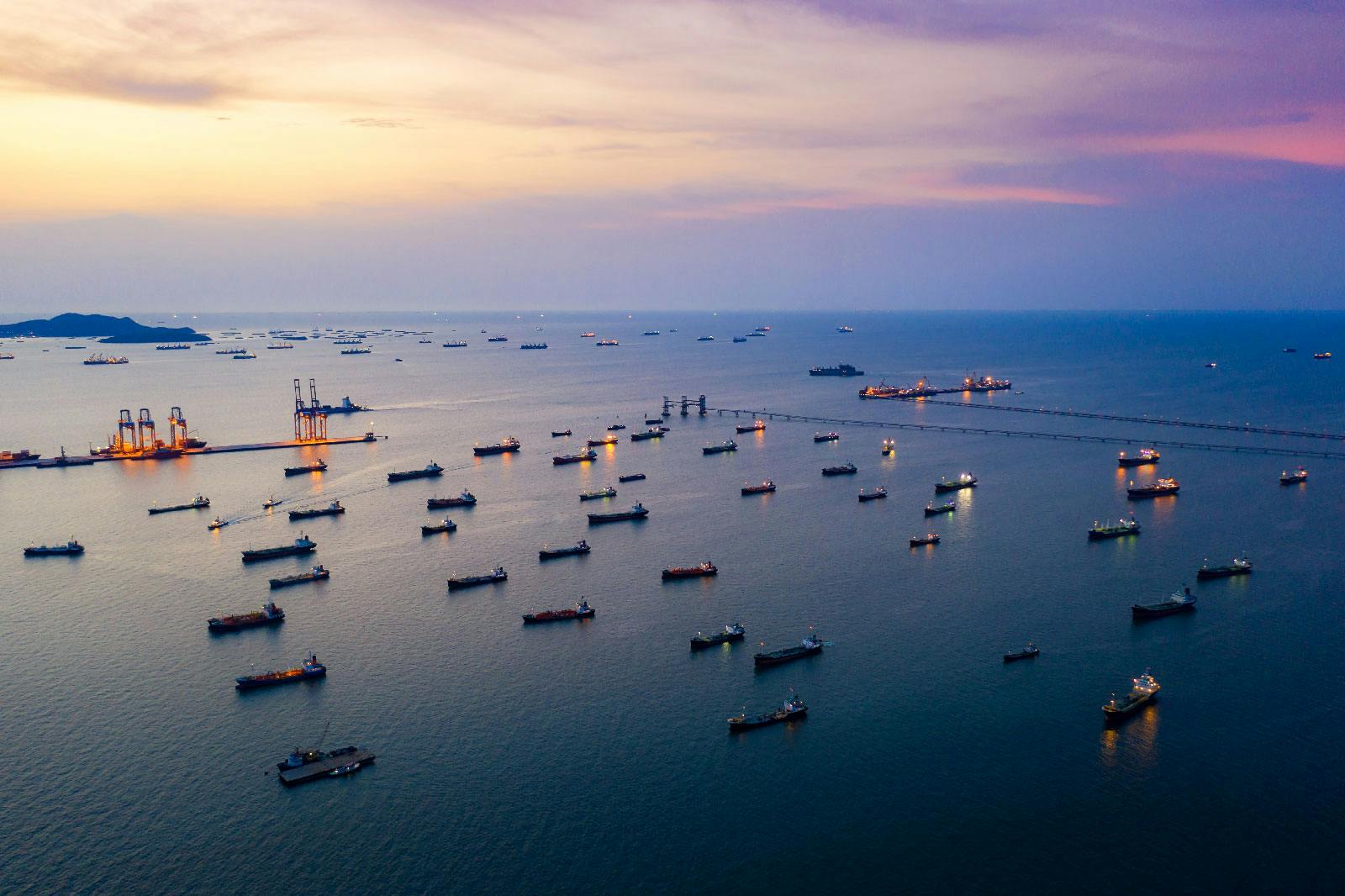Jan 14, 2026 Webinar | Global Supply Chain Architecture: Examining Red Sea’s Evolving Impact - Register Now

Focus on US ports: the domino effect of supply chain disruption
The challenges that international trade is currently facing - Covid, Brexit, Suez Canal blockage – impact all major ports, but especially those in the United States. While demand for goods has risen, more American companies are concerned about their ability to meet the demand. Some companies may not feel the direct consequences of specific events, but the knock-on effects in the future. The danger might be even greater for the companies that don't feel these immediate impacts as the ripple effect can bring about unexpected delays, who’s unpredictable nature can prove even costlier.
The domino effect on US trade
The massive flow of vessels after the Suez Canal blockage led to traffic jams into North European container hubs that were already struggling to cope with the flows of imports from Asia. The same issue is now occurring in the United States, especially in the East Coast sites, where ports were already saturated.
Main ports are suffering from a bottleneck that is slowing the unloading and reloading process for ships. Some ships have been awaiting entry into the neighboring ports of Los Angeles and Long Beach for several weeks. The fact that many of these ships are “mega container ships” - or ships that can hold 10,000 TEUs (twenty-foot Equivalent Units) - increases the severity of this backlog as they require more manpower to be unloaded. The situation is made worse by the fact that this backlog also contributes to the massive shortage of shipping containers, which is a major contributing factor to the global supply chain and shipping delay issues.
Whilst many companies will be concerned by delays, they will be even more alarmed by the rising costs due to port congestion and increased detention and demurrage fees - issues that are being compounded by a labor shortage due to Covid-19. As a consequence, the cost to ship a container of goods, which had plateaued near record highs in the first quarter, is rising again along with global trade prices. For shippers, the impact on business is colossal. The situation does not only affect direct cost but also leads to replenishment delays, inventory shortages, extra costs for last-minute re-routing, and additional operational costs.
Lessening restrictions won’t ease supply chain disruptions
Although vaccination rates and the easing of restrictions may reduce some of the stresses on the global supply chain, companies are also struggling to meet the demand as business returns to normal.
The long-term impacts of the Suez Canal blockage, port congestion in the U.S., and the worldwide chip shortage on global trade will continue to be felt for some time. Consequently, American consumers could start noticing increased prices, reduced product offerings, and longer delivery times if companies are not able to absorb those extra costs or better manage their inventories.
How to mitigate the effects of supply chain disruption with real-time visibility
The impacts of the domino effects are unavoidable. But real-time visibility can help companies to better anticipate these events, assess their impact, and, most importantly, mitigate their outcomes.
Real-time visibility enables users to know exactly where goods are at any stage of the transportation process and keep track of their updated status in real-time (loaded or unloaded for instance). During the Suez Canal blockage, Wakeo’s geolocalization tool helped our customers to quickly identify affected vessels and products.
Wakeo's analytics also enable our customers to understand how long certain delays (like port blockages) might affect their flow of goods and when they can expect their goods to arrive thanks to accurate and reliable data. Companies can predict the effects on stock replenishment and the wider consequences on their business.
Our demurrage and detention dashboard enables our customers to keep an eye on standing containers and alert them whenever extra charges occur. Wakeo users are able to use the real-time visibility of container statuses to limit additional costs - for example, by prioritizing the expedition of containers that are overstaying the free-time allowance - and to find the best solution to delays and unexpected events.